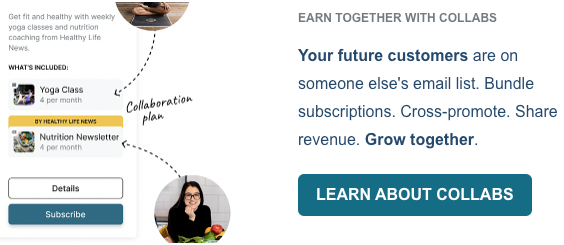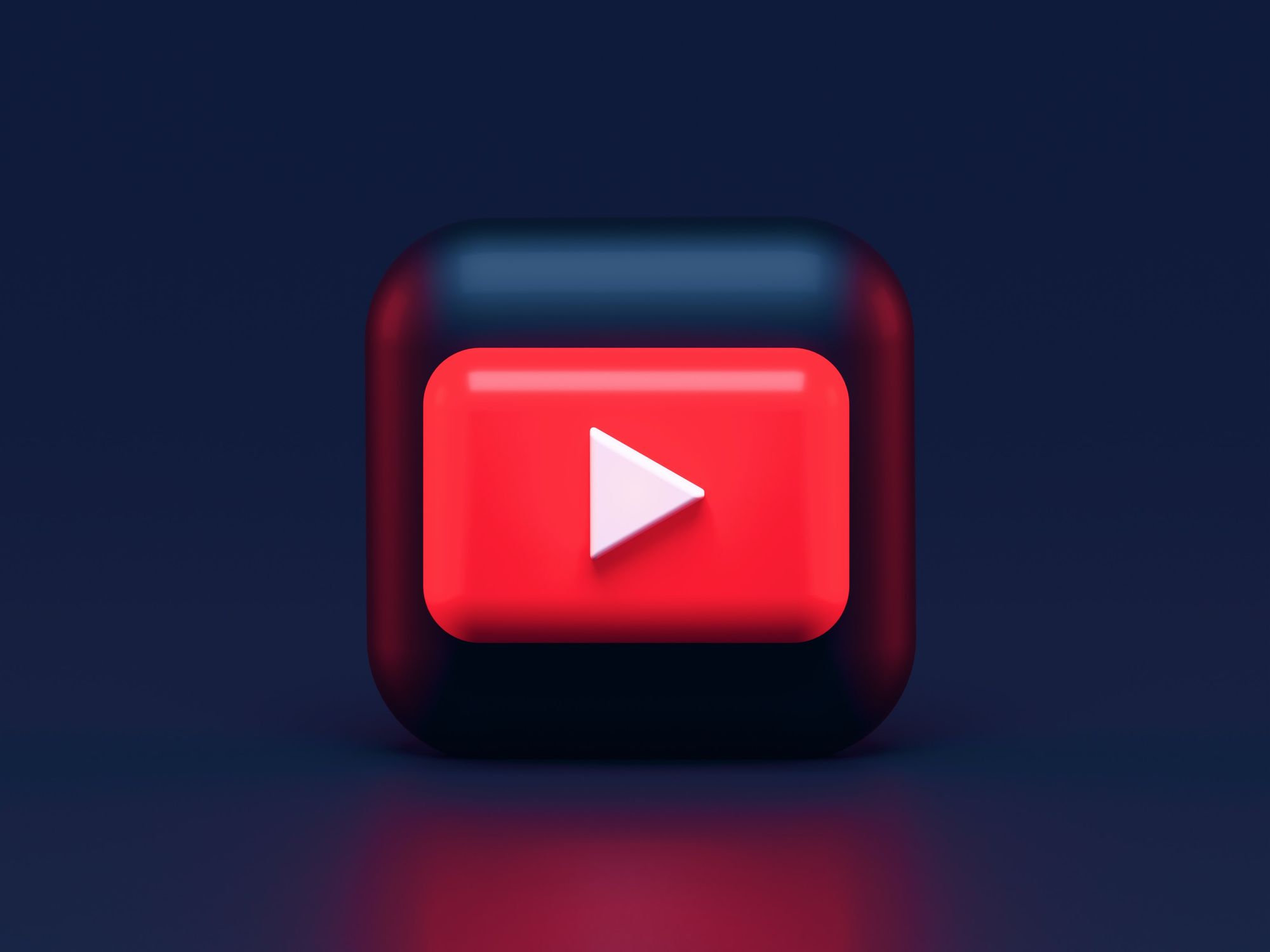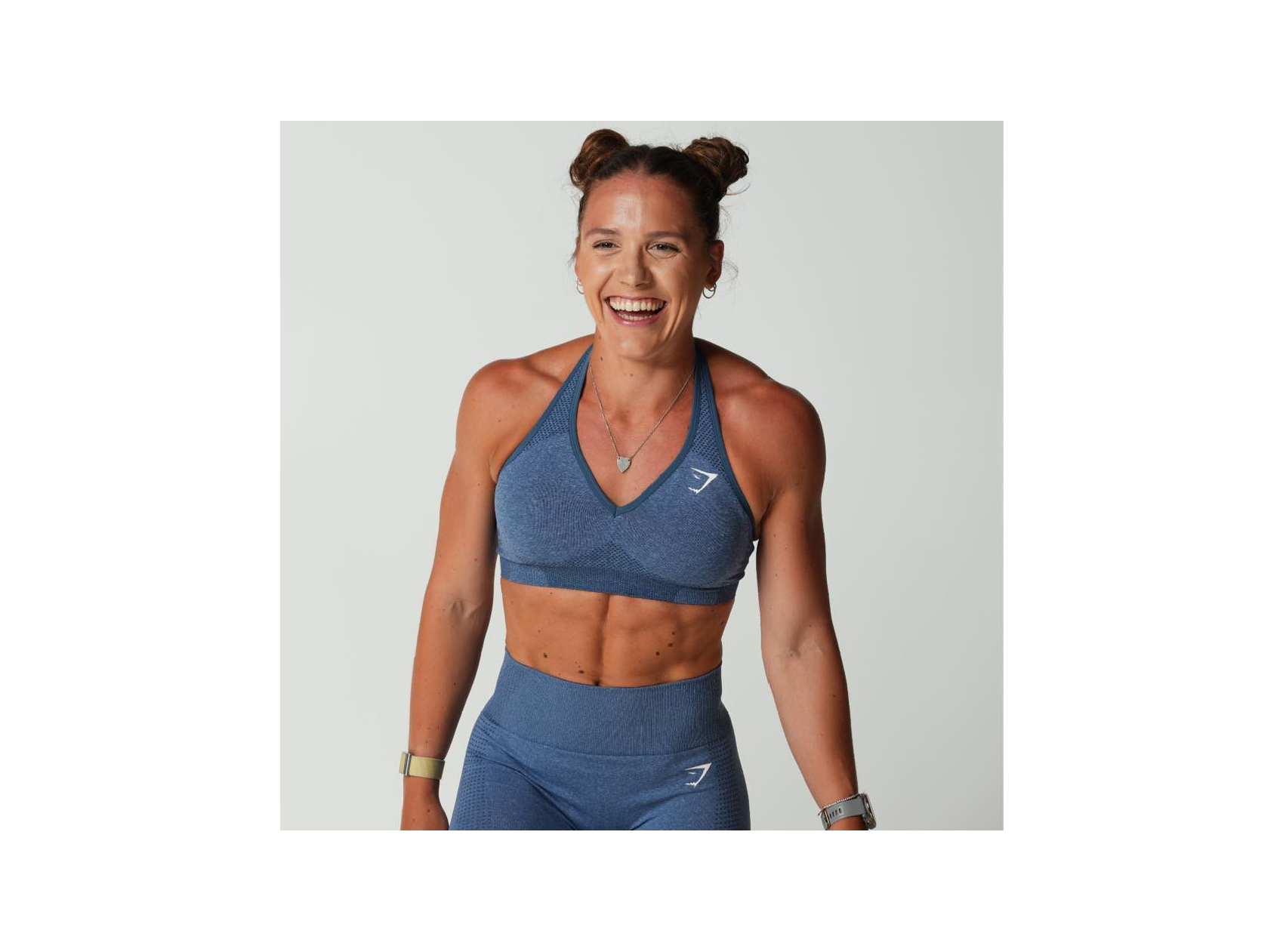Knowing how to monetize YouTube videos as a content creator, product owner or digital marketer is essential. Content creators (YouTube creators especially) are putting time and effort into creating and publishing great content on YouTube and other social media platforms. Content creators deserve to reap the rewards by leveraging the most up-to-date methods of creating a revenue stream. Not just any methods.
These methods are ranked based on the level of effort (creating content, marketing, etc.) versus the level of impact (creating scalable and sustainable revenue that compounds).
As a content creator, you can easily burn out from creating so much free content with little or nothing to show while platforms like YouTube generate revenue from the audience you worked hard to build. This article is for you if you as a video creator ready to start making good money from your work.
The good news, ad revenue is not the only way to monetize. Here's a countdown of your options from 12 to 1.
Spoiler alert: Of all the different ways to monetize, option 1 is ideal and the future of monetizing YouTube. Subkit is specially made for solopreneurs and content creators like you.
Methods to monetize ranked from least to best.
As you're probably aware, it's vital to know your audience intricately, and understand their pain points, wants, and needs. You simply can't create engaging content without knowing what drives the target audience. And if you want the most out of all these monetization methods, you need engaging and original content.
With that noted, here’s how to monetize YouTube shorts and videos effectively.
12. Join the YouTube Partner program
One thing people are often unaware of is that YouTube video monetization isn't automatic. You’ll need to apply for the YouTube Partner Program (YPP) to start getting paid for your content. YPP is how creators unlock access to YouTube monetization features and resources, including revenue sharing from ads served on your content.
As a YouTube partner, you’ll also receive access to the Creator Support Team and the Copyright Match Tool to help protect your original content. However, you must meet YouTube's own set of eligibility requirements to qualify for YPP.
You can work towards meeting each YPP requirement if you aren’t able to at the moment. YouTube’s monetization requirements are pretty straightforward but the most challenging eligibility requirement is usually ensuring compliance with YouTube’s policies.
That’s because rampant bad content quality, inaccurate information, and copyright issues forced YouTube to become extremely strict – about what it allows on its platform. In addition, companies that pay YouTube to advertise don’t want to associate their brand with questionable content. So keep all that in mind as you start earning income for your work.
YouTube monetization requirements
To be eligible for YPP:
- You must follow all of YouTube’s channel monetization policies.
- You must reside in a country where YPP is available.
- Your YouTube channel must be in good standing with no active Community Guideline strike.
- You must have over 4,000 valid watch hours in the last 12 months.
- Your channel must have over 1,000 subscribers.
- You must have a linked AdSense account. Creators can’t receive payments without this account.
11. Create income streams via Ads
Receiving ad revenue from videos is one of the first things most creators think about monetization-wise. For those with a high number of views, this is an excellent way to generate YouTube revenue. You become eligible for ad revenue immediately after your YPP application and acceptance based on eligibility guidelines. This means turning on ads for all videos that meet YouTube’s advertiser-friendly content guidelines. This is what will allow adverts on your content – think of it as YouTube’s way of getting your consent.
The cut for ad revenue is 45/55, or you keep 55 percent and takes much money at a hefty share - YouTube takes 45 percent. Note, the YouTube ads framework can change at their discretion.
To turn on ads for your videos (at the time of this publication):
- Visit YouTube Studio by clicking on your profile picture at the top right and selecting it from the dropdown menu. You can also go to youtube.com directly.
- Then click on ‘Content’ from the left navigation menu.
- Select the videos you want to monetize, click the ‘Edit’ dropdown, and locate ‘Monetization.' Click ‘On’ from the monetization dropdown. Note that you'll only see this option when your channel is eligible to monetize videos.
- Use ‘Add edit’ if you want to update the types of ads in bulk. Otherwise, proceed by clicking the box next to “I understand the consequences of this action” and click ‘Update videos.'
10. Get YouTube Shorts bonuses
You may qualify to receive bonuses as part of the YouTube Shorts Fund without being a YouTube Partner. The YouTube Shorts Fund is a $100M initiative to reward creators that make creative and original Shorts. These are short-form videos similar to what you’d see on TikTok and Instagram Reels.
YouTube Shorts also offers a few tools or features not available with regular uploads, including a multi-segment camera and hands-free recording tools. You can also adjust the playback speed for your videos and add music tracks from a library.
And like YPP, you must meet additional requirements to receive money from the YouTube Shorts Fund.
YouTube Shorts Fund requirements.
To be eligible for YouTube Shorts Fund bonuses:
- Your channel must follow all YouTube policies, including its community guidelines, monetization, and copyright
- Ensure you upload at least one eligible YouTube Short in the last 180 days.
- Your channel must contain only original content. Such things as unedited movie clips, reuploaded videos from other creators, and videos with third-party references (watermarks, metadata, hashtags, etc.) are not original content.
- You must be at least the age of majority in your country. In the United States, that number is 13.
- People between 13 and 18 must have a parent or guardian accept the terms and set up their AdSense account.
- You must live in an eligible country for the YouTube Shorts Fund.
9. Sell your own products
You may be able to sell your products through YouTube’s merchandise feature if you have a strong brand and highly engaged followers. However, this option is only available for creators with 10,000 subscribers or more, and you must be part of YPP.
To get started after you meet the eligibility requirements:
- Open YouTube Studio and click ‘Monetization’ from the left navigation menu.
- Click on ‘Merchandise’ (the tab is only visible for eligible creators).
- Follow the on-screen instructions to receive your Spring or Spreadshop store ID. These external platforms integrate with YouTube to make selling your merchandise possible.
8. Find and work with paid sponsors
Your options for making money from your videos aren’t limited to YPP. You can find and collaborate with other businesses willing to pay to promote their products or services in your videos if you have a high amount of subscribers or very high engagement.
You’ll need to draft a compelling offer and reach out to potential partners via email, LinkedIn, etc. But all of that isn’t as hard as it may seem. Many companies want to pay great creators with a highly engaged audience for promotion.
Also, you can use YouTube BrandConnect to quickly discover brands that are an excellent fit for your business. The service uses sophisticated algorithms to match creators with potential sponsors. However, your engagement rate will be critical to acquiring brand sponsors.
Companies will want to see your numbers to ensure you can both benefit from the partnership. For example, a creator with 500,000 subscribers and a less than one percent engagement rate will find it difficult to win over potential sponsors. You can check your engagement rate through YouTube Analytics.
Further, you don’t need tons of subscribers to earn income with this monetization method. Even with 1000 subscribers, you can do well if most of your audience engages regularly. Many YouTube channels primarily use paid sponsorships to earn, especially those with sensitive discussions or topics.
7. Get into affiliate marketing
Another way to monetize videos is to promote affiliate products. Many companies that offer digital products have affiliate programs meant to reward referrals for successful purchases.
To start, you’ll need to find products that mesh well with the subject or topics you cover on your channel. You can find them by checking out affiliate marketing hubs like ShareASale or doing a quick Google search. If possible, you can also contact brands directly to see if they have an affiliate program you can join.
After becoming part of a referral program, you should receive a unique affiliate link. Of course, you must share that with your viewers so they can check out the product, and you’ll earn a commission for every successful sale.
You can include affiliate links with your video descriptions or add them to the videos directly using a short link, which you can acquire using URL shorteners. These are simple tools that shorten lengthy URLs.
6. Monetize through YouTube channel memberships
This feature allows the most loyal fans to support your work by subscribing to the channel for a monthly fee. In exchange, they can receive exclusive perks such as member-only videos, product discounts, badges, etc.
And for the most part, the qualification requirements are the same ones you’d need to become eligible to earn from YouTube Premium – have 1,000 subscribers, be a YouTube Partner, be 18+ years old, and reside in an eligible country.
To turn channel memberships on once you become eligible:
- Log in to your Google Account and visit the ‘Memberships’ page.
- Click on ‘Get started' and follow the instructions that come up.
5. Use a third-party platform to foster patronage
There are many patron-based platforms out there. To name a few, there are Patreon, BuyMeACoffee, Kofi, and others. Like channel memberships, you can use these third-party to create memberships for your YouTube audience. The platform will allow loyal fans to support your channel by becoming members for exclusive perks.
And many YouTubers use these tools to offer content not shared on their YouTube channel. It's a great way to have people support your work without being eligible for monetization. So if you’re wondering how to get monetized on YouTube without 1000 subscribers, this is it.
You can have 50, 100, or zero subscribers and still use Patreon to make money for your work. Also, such third-party platforms are often better than channel memberships if you deal with sensitive or controversial topics.
4. Run live streams to get paid from ads, live chats, super chats, and stickers
Like with regular videos, you can monetize your live streams with ads. However, you can also earn money from Super Chats and Super Stickers. These are essentially donations or tips; attendees can send anywhere from $1 to $500 as Super Chat or Super Sticker during live streams.
Super Stickers are fun animated stickers people can use to enhance their interactions. YouTube will pin their messages for a set amount of time, depending on how much the attendee spends. The more considerable the amount, the longer the Super Sticker remains.
Super Chats aren’t animated, but the video platform also pins them at the top. As with its cousin (Super Stickers), the more you give, the longer a Super Chat pin remains. Further, Super Stickers and Chats are clickable – allowing other attendees to revisit the message.
Also, YouTube will keep around 30 percent of your earnings from Super Chats and Stickers. That means you get 70 percent of the amount. The more engaged your audience, the more lucrative the monetization method. However, geographical limitations apply – Super Chats and Stickers aren't available in every country.
To start earning with this method, you must turn on ads (covered earlier), Super Chats, and Super Stickers. For the Supers:
- Go to YouTube Studio and click ‘Monetization’ from the left navigation menu.
- Look for the menu at the top of the dashboard and click ‘Supers.' Then click on ‘Get started.'
- Follow the instructions, and after that, you’ll see the options to turn on Super Chats and Super Stickers. Adjust the blue switch accordingly.
3. Generate YouTube Premium Revenue
Creators meet eligibility criteria for YouTube Premium the moment they join YPP, and the best part is you don’t have to do anything special. You won’t have to change your account or take other specific actions to earn. YouTube Premium is available to all creators, so you’ll get paid every time a premium member watches your content.
Currently, there are over 23 million YouTube premium subscribers, and researchers expect that number to rise above 27 million by 2024. So this could be a viable revenue source if projections hold true.
The main reason people subscribe to YouTube Premium is as follows.
- Members can watch videos without interruptions from ads.
- Members can run the YouTube smartphone app in the background. That means people can listen to video audio while doing other things.
- Members get access to YouTube Music ad-free.
2. Collaborate with other YouTubers
Collaborating with other creators often leads to better content. So viewing YouTube as a collaborative space rather than a competitive one can improve the value of your work.
Collaboration also fosters relationship building and helps expose your channel to new audiences you may not have considered. It can be a great way to grow your following without highly ranked videos. YouTubers who collaborate typically grow faster.
You'll need to reach out with your collaboration offer to find opportunities. Email is the easiest and most effective way to connect with another YouTuber. You can find most creator email addresses from the YouTube channel's 'About' page. Ensure your copy is well-written and the subject line straight to the point (e.g., 'collaboration request’) for the best results.

1. Combo Method: Combine offering a subscription service and partnerships with leveraging YouTube as an awareness channel.
Combining a subscription service with partnerships while leveraging YouTube as a promotional channel is the best way to monetize YouTube because it creates compounded growth and reduces hard work substantially. It removes the burnout caused by starting a YouTube channel and producing hours of video. Also, the effort of trying to create a viral video or become a YouTube star. While that is a great start to a successful YouTube channel, it's very unlikely. A better way is to build and leverage a loyal audience through a 6 step method
- Tease the audience with video content and direct them to a blog post.
- In that blog post, promote access to high-quality content, online courses, videos, and services (1/1, products, or group coaching). You can package those into a monthly subscription plan or tiers of subscription plans.
- Partner with complimentary YouTubers by offering a revenue share of the monthly payments.
- Partner with YouTube influencers with a referral program that gives them a percentage of the sale AND gives the person they referred a discount code that's automatically applied to their membership fee.
- Get indexed in Google. This search engine will always outperform YouTube or any social media channel.
- Collect email addresses through a newsletter offer. Email is one of the oldest but most effective marketing channels.
Conclusion
In a nutshell, there are several ways to monetize your YouTube videos. Some methods are better the others. The best monetization method is #1. It creates a great growth loop that allows you to market at the right place at the right time, own your followers, work less, and have control.
Your entire revenue stream can fall due to YouTube changes. You do not own your followers and when your video content and revenue stream is YouTube-dependent, it's a huge and considerable risk. The YouTube algorithm can change at any moment.
Solution: Start a subscription business with Subkit
That’s why a more successful, scalable, and sustainable approach is to offer a subscription or membership service you control that's fed by incentivizing followers and creating and using YouTube for awareness and Google Search to build traffic. Instead of risking your revenue stream with YouTube, you can use it as a source of traffic for your offer. Thereby attracting the audience to a place where you have 100% membership control. With this approach, you can't lose. you'd provide more teaser content on YouTube to attract the target audience to your platform. And you'd be collaborating with other YouTubers to access new potential customers and entice them to your offer.
Subkit empowers creators. We are the only solution that gives you an out-of-the-box solution. We are also the only solution that gives content creators the ability to collab and share subscription revenue. Now is a great time to explore what's possible. Click here to get early access now to the most innovative platform for subscriptions and collaborations.



